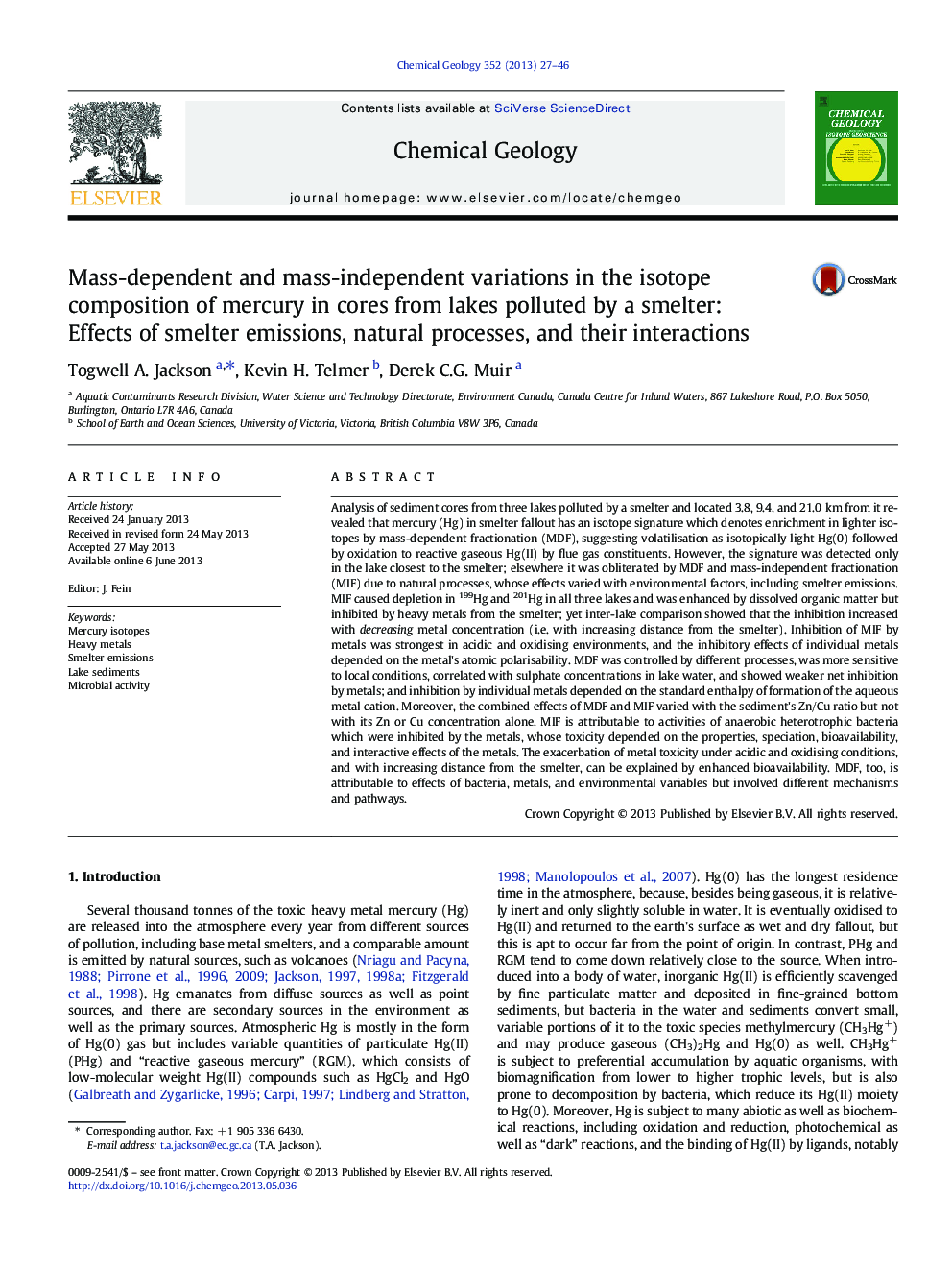| کد مقاله | کد نشریه | سال انتشار | مقاله انگلیسی | نسخه تمام متن |
|---|---|---|---|---|
| 4698964 | 1637617 | 2013 | 20 صفحه PDF | دانلود رایگان |
• Variations in Hg isotope ratios of cores from smelter-polluted lakes were examined.
• The variations denote mass-dependent and mass-independent isotope fractionation.
• Isotope fractionation is mainly ascribed to natural (notably microbial) processes.
• Smelter fallout and environmental factors strongly affected isotope fractionation.
• The smelter’s isotope signature was detected only in the lake nearest the smelter.
Analysis of sediment cores from three lakes polluted by a smelter and located 3.8, 9.4, and 21.0 km from it revealed that mercury (Hg) in smelter fallout has an isotope signature which denotes enrichment in lighter isotopes by mass-dependent fractionation (MDF), suggesting volatilisation as isotopically light Hg(0) followed by oxidation to reactive gaseous Hg(II) by flue gas constituents. However, the signature was detected only in the lake closest to the smelter; elsewhere it was obliterated by MDF and mass-independent fractionation (MIF) due to natural processes, whose effects varied with environmental factors, including smelter emissions. MIF caused depletion in 199Hg and 201Hg in all three lakes and was enhanced by dissolved organic matter but inhibited by heavy metals from the smelter; yet inter-lake comparison showed that the inhibition increased with decreasing metal concentration (i.e. with increasing distance from the smelter). Inhibition of MIF by metals was strongest in acidic and oxidising environments, and the inhibitory effects of individual metals depended on the metal's atomic polarisability. MDF was controlled by different processes, was more sensitive to local conditions, correlated with sulphate concentrations in lake water, and showed weaker net inhibition by metals; and inhibition by individual metals depended on the standard enthalpy of formation of the aqueous metal cation. Moreover, the combined effects of MDF and MIF varied with the sediment's Zn/Cu ratio but not with its Zn or Cu concentration alone. MIF is attributable to activities of anaerobic heterotrophic bacteria which were inhibited by the metals, whose toxicity depended on the properties, speciation, bioavailability, and interactive effects of the metals. The exacerbation of metal toxicity under acidic and oxidising conditions, and with increasing distance from the smelter, can be explained by enhanced bioavailability. MDF, too, is attributable to effects of bacteria, metals, and environmental variables but involved different mechanisms and pathways.
Journal: Chemical Geology - Volume 352, 16 August 2013, Pages 27–46
